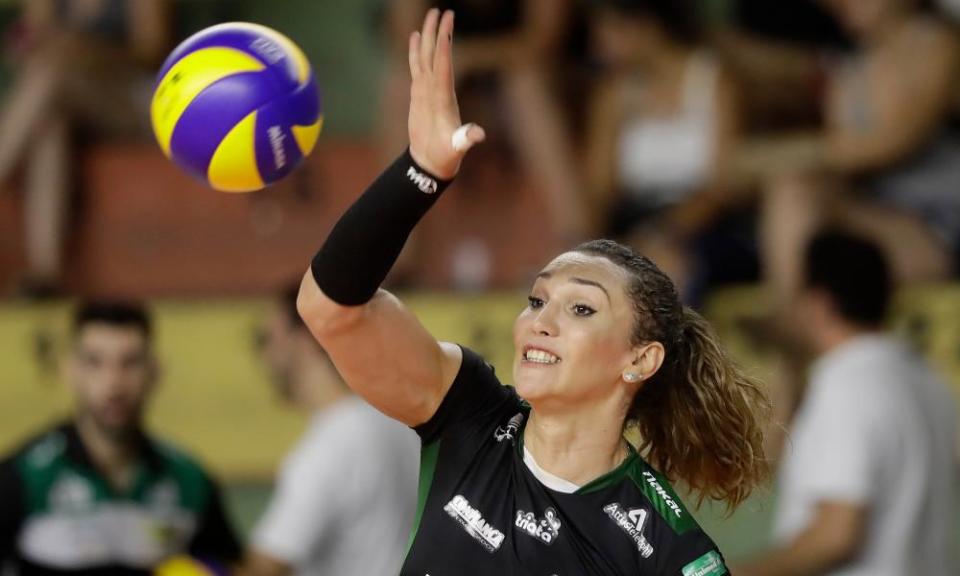Why calls for athletes to compete as a homogenised group should be resisted

Can you imagine sport without separate men’s and women’s categories? A world where Serena Williams never got a sniff of 23 majors – not with Roger Federer, Rafael Nadal and Novak Djokovic in her path – and the golden British women’s hockey team of Rio 2016 never even took to the field. It sounds like a dystopian nightmare. In fact it was an idea mooted on Radio 4 last week in a Woman’s Hour discussion about whether transgender women should play women’s sports.
When it was put to the psychologist Dr Beth Jones that it could lead to no woman playing for a British team again, her response was startling. “They may, they may not. That is all in the future to be determined,” she said. Told that the idea would seem a “horrifying prospect” for those who believe in the importance of female sport, Jones replied that women might also push themselves more. “There is a bit of an argument, academically, that perhaps women cap their capability psychologically because they are competing against other women,” she added. “If they feel they’re then competing against men – perhaps they would up their performance and be competing on more of that level.”
But the biological gap is real – and David Epstein’s brilliant book, The Sports Gene, has numerous examples that show it. As Epstein notes, up until the age of 10, girls and boys have similar bodies and their top running speeds are almost identical. But after puberty, “when boys are literally on natural steroids”, men’s and women’s records “are no longer in the same athletic universe”.
In athletics the rule of thumb places the elite performance gap at 11% – that is the top 10 men at any distance from 100m to an ultramarathon are about 11% faster than the top 10 women. The scientific evidence also shows that, on average, men have 80% more muscle mass in their upper bodies and 55% more in their legs. These are massive advantages – and they explain why a single category across all men’s and women’s sport would not work. Men would dominate every sport where speed, strength or power matters.
Yet a pertinent question remains from the Woman’s Hour debate: how should sport respond when a male athlete transitions and wants to compete against women? It is an issue that will soon come into sharper focus given that at least one trans athlete – the Brazilian volleyball player Tiffany Abreu – has a strong chance of making the Tokyo 2020 Olympics.
Under International Olympic Committee rules, athletes do not need “surgical anatomical changes” to compete as a woman. Rather they need to demonstrate their testosterone level in serum has been under 10 nanomoles per litre for at least 12 months. Testosterone, as the renowned sports scientist Ross Tucker explains, is the key determinate for the IOC. “It means you could have entirely male physiology and anatomy, except for the testosterone levels, then declare that your gender identity is female, and compete in women’s sport.”
The IOC’s policy is an attempt to ensure trans athletes are not excluded from the opportunity to participate in sport – while also trying to ensure fair competition for women. It is an uneasy juggling act, given the strong voices on all sides.
The big question, of course, is how much of an advantage trans athletes might have when they transition. Science does not offer a full answer. However, pioneering research from Joanna Harper, a medical physicist who was born male and later transitioned, shows that when runners take hormone-suppressing medication they end up with similar gender-graded performance standards as women as they did as men. Therefore fears that trans runners or cyclists could have a large advantage in endurance sports appear unfounded.
But it is not that simple. “People say transgender women have advantages in sports and, you know what, it’s true,” says Harper, who advises the IOC and is recognised as a leader in the field. “Even after transition, on average, transgender women are taller, bigger and stronger than cisgender or ‘normal’ women. However, transgender women have disadvantages too. When they transition they have substantial loss of muscle strength and aerobic capacity, which causes them problems with agility, quickness and stamina.”
Transitioned athletes “undoubtedly benefit” from the muscle memory of years of strength training – according to Harper – although more research is needed to find out by how much. That is not easy given the lack of funding and the need for exercise physiologists at universities to work with endocrinologists at gender clinics.
As Tucker explains, testosterone also provides men with performance advantages that go beyond just high levels of the hormone. “Many of them are laid down in puberty and adolescence and are unreversed even when a testosterone level is changed,” he says. “In combat and strength sports, athletes could have advantages even after they have transitioned.” One thought experiment is to ask how much power Anthony Joshua might have if he transitioned. Would it really be safe to see a fight between him and a much smaller female heavyweight?
It all makes for a complex area for policymakers, who are understandably worried about being accused of discrimination. However, Harper and Tucker are clear that calls for all athletes to compete as a homogenised group must be resisted. “It would be a major disaster for women’s sports,” says Tucker. It is hard to disagree.

 Yahoo Sport
Yahoo Sport 





































